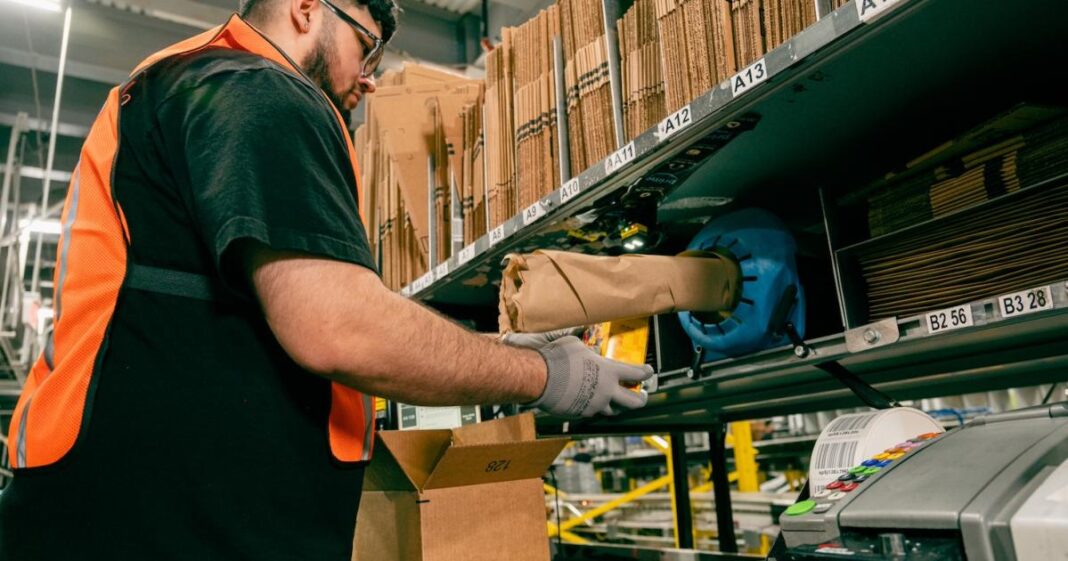Amazon has replaced single-use plastic air pillows with recycled paper in 95 percent of its delivery boxes in North America. A full switch is planned by the 2024 holiday retail season.
The move, announced June 20, will cut an estimated 15 billion of these cushions annually and follows a similar elimination process in Europe in the summer of 2022. Approximately 40 percent of Amazon orders are shipped in these boxes. The Seattle-based retailer has cut 37,150 tons of plastic packaging since 2020, but it still used 85,916 tons of single-use plastic in 2022.
Eliminating the pillows represents Amazon’s biggest plastic reduction yet. Amazon is phasing out single-use plastics across its worldwide delivery network. The company eliminated extra packaging completely by shipping about 11 percent of items in their original boxes. It is also switching from plastic to paper envelopes, a process that began earlier this year.

The plastic pillow problem
“Wherever we can, we use recycled content. But sometimes automation technologies make that more challenging,” said Pat Lindner, vice president of mechatronics and sustainable packaging at Amazon.
Even if you can collect them, used air pillows are difficult to recycle because they often jam sorters. “Most air pillows do not have effective recycling programs, even if you take the time to pop them one by one,” said Judith Enck, president of Beyond Plastics, and a former Environment Protection Agency administrator. “Paper and other fiber products are suitable alternatives.”
An estimated 460 million metric tons of plastic were produced last year, and at least one-third went into packaging, according to data cited by the Plastic Pollution Coalition (PPC).

Paper is a better shock absorber
Biodegradable products can be discarded more easily. Paper (recycled or otherwise) or algae- and mushroom-derived fillers are better for cushioning items, said Erica Cirino, communications manager at the PPC.
Aside from being eligible for curbside recycling, paper absorbs drops and other stresses more effectively than pillows, said Clint Haynes, vice president and partner with Stress Engineering, which helped Amazon replace the air pillows. They fill “crumple zones” and absorb energy from impacts, rather than allowing them to bounce around.
The way packages are shipped has changed little since the 1970s, said Haynes. “If you’re a believer in where e-commerce is going to go, you need to start rethinking the fundamentals of your packaging programs,” he said.
Equipment and process overhaul required
Amazon tested the changes in an innovation center near its Seattle headquarters and at its fulfillment center in Cleveland, the first to switch from plastic to paper mailing envelopes in late 2023. The company replaced the feeders for the plastic air pillows, which were leased, with canisters that dispense the paper. The testing costs came from Amazon’s innovation budget, but upgrades were part of regular capital expenditures across its facilities, Lindner said.
Among the factors Amazon evaluated were how long it takes to fill and seal a package (the new process is quicker) and the ergonomics associated with the process, including the height of the dispensers (which can be adjusted for individuals), Lindner said. The new process gives employees “more flexibility to protect … and allows them to be more thoughtful,” he said.

